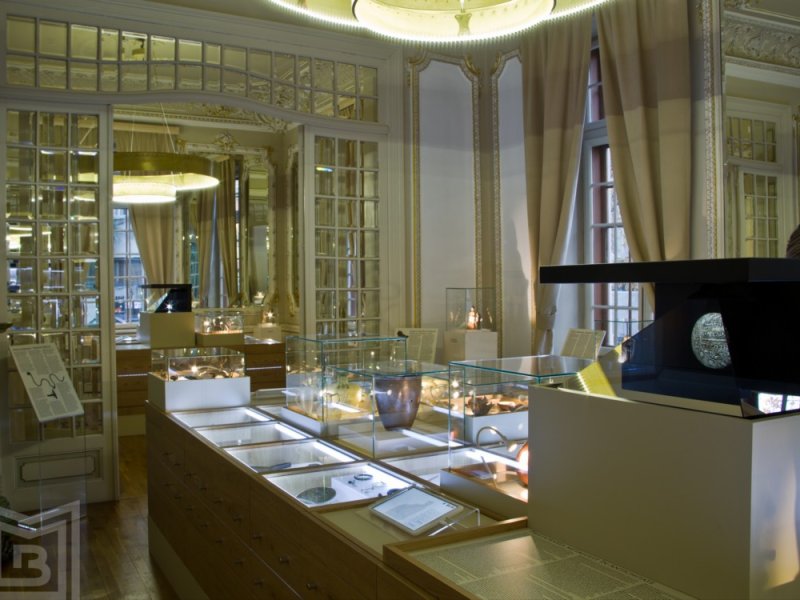The George Severeanu Museum in Bucharest and the story of the radiologist who collected antiquities

By Bucharest Team
- Articles
The history of the George Severeanu Museum in Bucharest begins with a personality whose passion exceeded the boundaries of his medical profession. Dr. George Severeanu, a renowned radiologist and the first director of the Bucharest Municipality Museum, dedicated a significant part of his life to gathering and preserving archaeological and numismatic artifacts.
The beginnings of a collector fascinated by history
His home, located at 26 Henri Coandă Street, became over time not only a living space for him and his wife, Maria, but also the place where an impressive private collection took shape, today accessible to the public.
The residence, dating from the second half of the 19th century, preserves to this day the atmosphere of an elegant Bucharest home belonging to an intellectual family concerned with culture and the arts. Restored in the 1990s, the house is now both a memorial space and a museum of archaeology and numismatics. For decades, this collection has attracted researchers, history enthusiasts, and visitors eager to discover rare artifacts and testimonies of ancient civilizations.
An exceptional collection of furniture, books, and archaeological objects
Among the most remarkable elements of the museum are the original furniture pieces, created on special order for Dr. Severeanu. These objects, preserved in excellent condition, offer a glimpse into the collector’s daily universe and into the refined tastes of the era. Alongside them, the personal library, containing rare volumes, helps complete the atmosphere of an intellectual space dedicated to study and contemplation.
However, the core of the collection is represented by archaeological and numismatic objects gathered by Severeanu over decades. Ancient Greek vases, clay figurines, bronze and marble objects, Roman glassware, engraved gems, ancient cameos, as well as ceramics belonging to the Cucuteni, Vădastra, Wietenberg, and Boian cultures testify to the vastness of his interests and the depth of his research. These pieces date from different periods of antiquity and outline a coherent and impressive cultural journey.
A numismatic treasure of national value
One of the museum’s greatest attractions is the numismatic collection assembled by Dr. George Severeanu, considered among the most valuable in Romania. Comprising approximately 9,000 pieces, it includes Greek autonomous and provincial coins, Geto-Dacian and Celtic issues, Roman and Byzantine emissions, medieval coins of the Romanian Principalities, as well as modern and contemporary coins. This diversity reflects not only the collector’s passion, but also a genuine scientific interest in the history of monetary circulation and commercial exchanges in different historical periods.
To support a better understanding of these artifacts, the museum integrates the numismatic pieces based on dating, region of origin, and typology. Particular emphasis is placed on the monetary hoards acquired by the collector, which, correlated with historical information, provide a coherent picture of political, economic, and cultural exchanges over time.
From private passion to public treasure
In 1939, after the death of George Severeanu, the entire collection was donated to the Bucharest Municipality Museum. The residence became an official museum in 1956, opening its doors to the public as a cultural space dedicated to memory and research. Over the decades, the museum has undergone several restoration phases, the most important taking place in the early 1990s, when the building’s conservation state required urgent intervention.
After more than 25 years of closure, the museum reopened to the public in November 2017, giving Bucharest residents and tourists the chance to once again admire the “Maria and Dr. George Severeanu” collection. The reopening represented a moment of cultural significance, marking the recovery of a valuable heritage that had long remained inaccessible.
A museum that combines memory, science, and modernity
In creating the new thematic structure of the exhibition project, specialists aimed to harmoniously combine the memorial component of the house with the chronological journey specific to an archaeological and numismatic museum. A special place is given to the room that once housed Dr. Severeanu’s study.
Here, the original furniture, personal library volumes, and heritage objects are arranged in the same manner in which period photographs depict the collector’s working environment. This space preserves the intimate atmosphere of the doctor’s intellectual world and offers visitors a unique experience.
Modern interactive elements have been added to complement the memorial and scientific aspects, aiming to help visitors better understand the museum’s heritage. With the help of explanatory texts, visitors can become familiar with the various categories of historical artifacts and the information associated with them. In today’s Bucharest, this museum holds a unique position, as there is no other public collection that offers such a rich and diverse display of archaeological and numismatic objects.
Temporary exhibitions and cultural initiatives
Currently, in addition to the permanent collection, visitors can discover the temporary exhibition “Greeks Overseas. Red-figure ceramics from Etruria and Magna Graecia,” open until December 7. This exhibition enriches the public’s experience, offering a broader perspective on the artifacts preserved by the museum and highlighting the cultural connections between ancient civilizations.
The museum welcomes the public from Wednesday to Sunday, between 10:00 and 17:30, inviting visitors to step into a world where history, memory, and science come together in a vibrant and educational setting. Through its rich heritage and carefully crafted exhibitions, the George Severeanu Museum remains a landmark of Bucharest’s cultural landscape and a tribute to a passionate collector who dedicated his life to preserving the past.
We also recommend: Nicolae Minovici Museum of Folk Art, a century of history. From the “Bell Villa” to today’s folkloric treasure






























